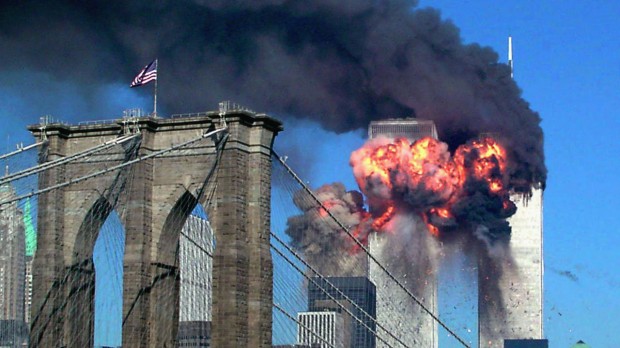Bermuda: $500M In Terror Capacity
Writers of terrorism insurance within Lloyd’s of London have seen considerable expansion over the past decade, and while capacity — including an estimated $500 million available from Bermuda companies — is adequate, higher reinsurance cover costs and emerging political risks look to dampen that growth.
Michael O’Connor, an underwriter at Ascot Underwriting Ltd. in London, believes that more than 30 Lloyd’s syndicates write terrorism cover, up from eight to 10 in 2002. Globally, Mr. O’Connor said, the terrorism insurance market is “getting bigger all the time.”
In an interview with the A. M.Best rating agency’s news service, Mr. O’Connor estimates per-risk capacity within Lloyd’s at $1 billion, with a further $500 million each available in Bermuda and the United States.
The involvement of Berkshire Hathaway could take the total to $3 billion. A decade ago, capacity within Lloyd’s stood at $100 million to $150 million. Appetites vary from syndicate to syndicate, he said.
Chris Parker, political violence underwriter at Beazley Group, said per-risk global terrorism capacity “is somewhere in the region of $2 billion. But that would be for a very straightforward benign risk in a country where everyone’s got available aggregate.”
The Lloyd’s market could probably provide about $1.5 billion in per-risk capacity, he said.
Stephen Ashwell, global product head of political violence at Bermuda-headquartered Hiscox plc, estimated terrorism premium income at Lloyd’s at a “fairly steady” $500 million a year. “It’s grown a little bit in the last two or three years,” he said.
“There’s A Much Greater Need For Political Violence Cover As Opposed To Just Pure Terrorism”
Kelly Crouch, head of war and terrorism at broker Jardine Lloyd Thompson Group plc in London, estimated that per-risk stand-alone capacity for terrorism risk at more than $2.5 billion. But few risks would need this much cover, and some all-risk property carriers can offer capacity on a terrorism only basis, she said.
JLT has not been able to find out how much premium income the global terrorism market generates, said Ms Crouch. She does not see ambitious plans by insurers to increase the size of their books.
“I think there’s a reticence to go out too aggressively, especially in the riskier territories, given the increased claims levels over the last couple of years,” she said.
An increased understanding by clients of terrorism and political violence risks has led them to look for broader political violence cover, Ms Crouch said.
Mr. O’Connor, who describes the terrorism market as profitable, does not foresee an immediate influx of new capacity. He noted the dampening effects of higher reinsurance costs and the slowing in the growth of the market since its dramatic expansion between 2005 and 2008.
“It’s been highly profitable for Ascot,” Mr. O’Connor said, noting that income is down about 50% from its peak. Ascot’s premiums stand at just under $40 million, compared with up to $75 million in 2007 and 2008. Rate reductions in the United Kingdom played the biggest part in this drop, he said.
Mr. O’Connor is happy with Ascot’s progress. “I wouldn’t want to swap my book and my net position with any of my competitors in the market,” he said.
He believes the product itself has probably changed more in the last two years than it had in the previous 10. “Now there’s a much greater need globally for political violence cover as opposed to just pure terrorism,” he said.
Ascot has stuck to its core market of global multinationals, about 75% of which are domiciled in the developed world, said O’Connor.
Mr. Ashwell, who declined to discuss Hiscox’s own book of business, said the current over-capacity in the market must be balanced against economic and political uncertainty in Europe and the Middle East. He expects Hiscox’s London office “to be very much at the forefront” in the provision of insurance to cover the reconstruction of Libya. He also sees opportunities in Latin America for Hiscox’sMiami office.
It is important for underwriters to understand how conditions can vary, Mr. Ashwell said. A terrorism policy written for Finland, for instance, is not likely to be broad enough to extend to the kind of commotion that might occur in Indonesia or Bahrain.
Beazley’s Mr. Parker is seeing an increase in demand for risks in the Middle East, notably in Egypt and Libya. Customers want to be covered for the full range of perils in those markets, he said.
Mr. Parker told the A.M. Best news agency he does not expect the overall terrorism market to grow this year. While underwriters who have been in the market for only a year or two can be expected to try to increase their business, he said, that growth is likely to come at the expense of existing providers.
“Some of the more established markets are looking maybe just to keep their book flat,” Parker said.
Beazley, which has strengthened its terrorism and political violence team in recent years, has seen an increase in its business from the United States. Mr. Parker attributes much of this to uncertainty about the long-term future of the Terrorism Risk Insurance Act, which is due to expire in 2014.
Last year’s tenth anniversary of the September 11 terror attacks acted as a reminder of how both the global insurance industry — and Bermuda — were altered beyond all recognition by those events.
The World Trade Centre Buildings Under Attack On September 11, 2001
Osama bin-Laden’s plot to attack both Washington DC and New York City helped drive tremendous changes in the industry and on the island.
“The most immediate change was that cover for terrorism no longer came as a free add-on with US property policies, sparking the creation of a new market,” reported the “Financial Times” last September. “In the UK, a sustained bombing campaign by Irish nationalists in the 1980s and early 1990s had already made terrorism uninsurable and led to the creation of Pool Re, a semi-public reinsurer of last resort for terror risks.
“But pioneers such as Axis Capital, set up in Bermuda in late 2001, led a commercial response to extreme terrorism-related risks for the US market.
“Axis was one of the wave of reinsurers set up in Bermuda to feed the need for fresh capital in the industry following 9/11. Many of them have gone on to become substantial insurers and reinsurers. This ‘class of 2001′ was not the first such on the mid-Atlantic island, but their effect on the industry in the past decade has been huge.”
As J. David Cummins wrote in his 2008 economic analysis of the Bermuda insurance market, the island’s role in the immediate post-9/11 period cannot be overestimated: “[A] major wave of company formations in Bermuda was triggered by insured losses from the September 11, 2001 terrorist attacks and the resulting shortages of coverage in several lines of insurance. The 9/11 losses marked another event when insurers paid significant claims, resulting in diminished underwriting capacity.
“As expected, several Bermuda insurers and reinsurers played a prominent role in funding the 9/11 losses. ACE and XL were among the top 15 insurers in paying 9/11 losses, and seven of the top 50 insurers paying 9/11 losses were eight were Bermuda companies.
“Following 9/11, capacity was particularly a problem in workers’ compensation, where insurers were concerned about future terrorist events and were unable to limit their exposure to workers’ compensation terrorist risk due to regulatory restrictions in the US. To help restore capacity, at least 10 new Bermuda insurers were formed with total equity capital of about $8.9 billion. The companies in the Class of 2001 included Allied World Assurance, Arch Capital, Axis Capital Holdings, and Montpelier Reinsurance. Catlin Bermuda Re, formed in 2002, is usually considered part of the Class of 2001.



